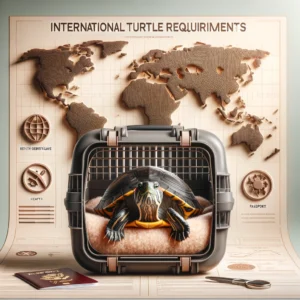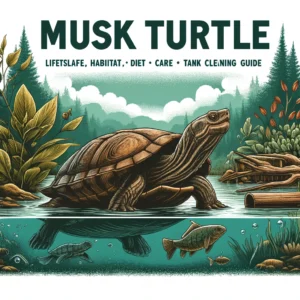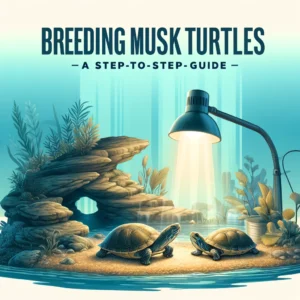Breeding mud turtles can be a fulfilling experience, though it requires a good understanding of their needs and behaviors to ensure success. Here’s a comprehensive breakdown of the breeding process for mud turtles, including preparation, mating, incubation, and care of hatchlings.
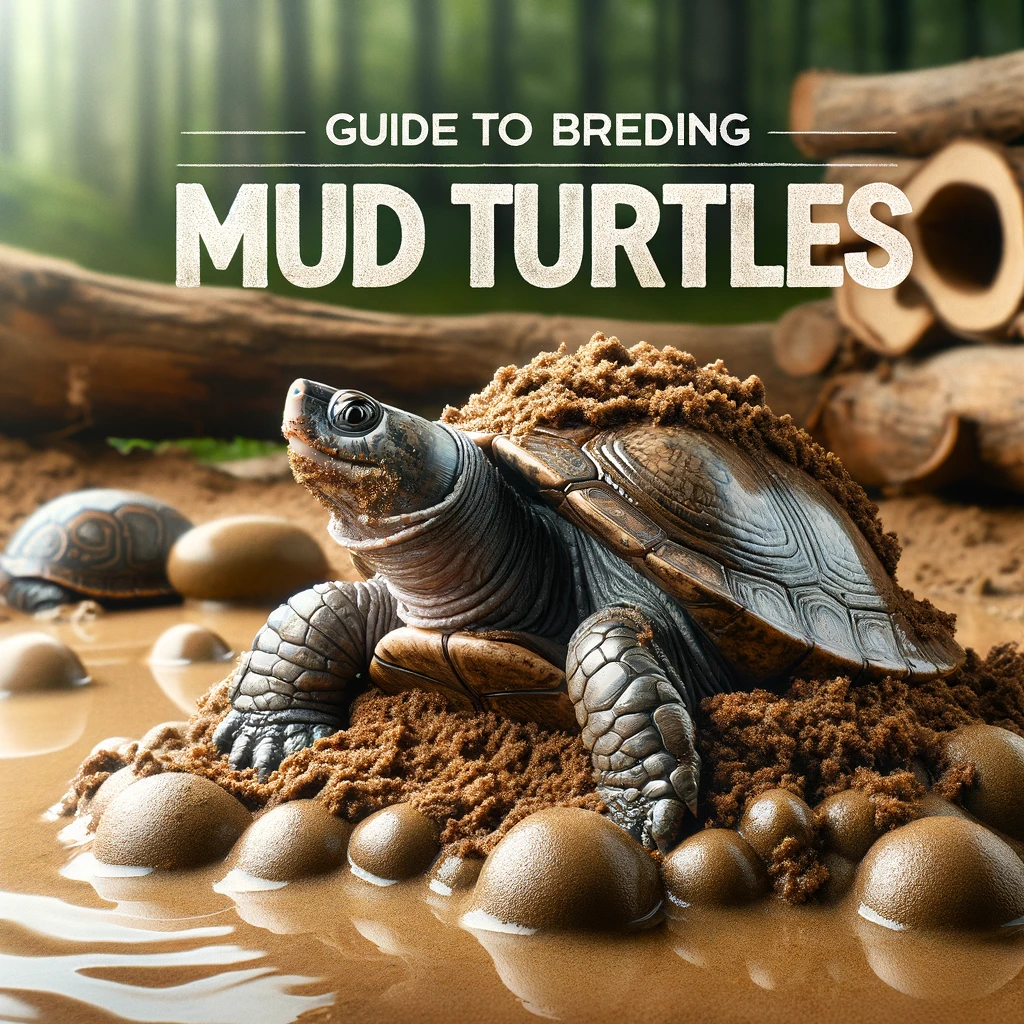
1. Preparation for Breeding
a. Sexual Maturity
- Age: Mud turtles typically reach sexual maturity at about 5 years of age. It is crucial to wait until they are fully mature before initiating breeding.
b. Determining Sex
- Physical Differences: Male mud turtles usually have longer, thicker tails and the vent (cloaca) is further from the base of the shell compared to females. Females often have a higher dome-shaped shell.
- Behavioral Cues: Males may show more interest in females during the breeding season, often following them or engaging in gentle biting.
c. Health Check
- Vet Visit: Before the breeding season, have a vet check to ensure both turtles are healthy, as breeding can be physically demanding.
d. Conditioning
- Diet: Prior to breeding season, increase the calcium and vitamin supplementation to enhance reproductive health.
- Environment: Simulate seasonal changes in their environment to encourage reproductive behavior. This can include varying the light cycle or adjusting the temperature slightly to mimic spring conditions.
2. Mating Process
a. Timing
- Season: Breeding usually occurs in the spring. Warming temperatures naturally stimulate mating behaviors.
b. Behavior
- Courting: Males may become more active, swimming around the female and possibly nudging her head or biting at her legs and the edges of her carapace.
- Mating: If the female is receptive, she will allow the male to mount her from behind to copulate. Ensure the water depth is sufficient for them to mate without drowning.
3. Egg Laying
a. Nesting Site
- Preparation: Provide a land area within the habitat that’s filled with soft, moist sand or soil which encourages the female to dig a nest.
- Process: The female will dig a hole using her hind legs and lay between 2 to 5 eggs. The number can vary based on the size and health of the female.
b. Incubation
- Temperature: Incubate the eggs at a steady 81°F (27°C). The temperature controls the sex of the hatchlings in some species, although this is less studied in mud turtles.
- Humidity: Maintain high humidity in the incubator, around 80%, to prevent the eggs from drying out.
- Duration: Incubation can last between 50 to 70 days, depending on temperature and species.
4. Hatching
a. Egg Care
- Monitoring: Check the eggs regularly for mold or excessive dryness, and turn them gently if necessary.
- Development: The eggs will show signs of hatching when you notice small cracks or hear chirping from inside the shell.
b. Hatchling Care
- Initial Care: Once hatched, the young turtles may remain in their shells for several days, absorbing the remaining yolk.
- First Feeding: Hatchlings can be fed small pieces of protein-rich foods like worms or small insects, along with finely chopped greens.
c. Habitat for Hatchlings
- Setup: Provide a similar aquatic setup as for adults but on a smaller scale. Ensure the water is shallower to prevent drowning.
- Water Quality: Maintain high water quality with frequent changes as hatchlings are more susceptible to water-borne diseases.
5. Post-Breeding Care
a. Female Recovery
- Nutrition: After laying eggs, the female will need additional nutrients to recover. Continue with calcium and vitamin supplementation.
- Observation: Monitor the female for any signs of distress or health issues like weight loss or lethargy.
b. Long-Term Hatchling Care
- Growth Monitoring: Regularly measure and monitor the growth and health of hatchlings.
- Socialization: While mud turtles can be less social, hatchlings kept together should be observed for any signs of aggression or bullying.
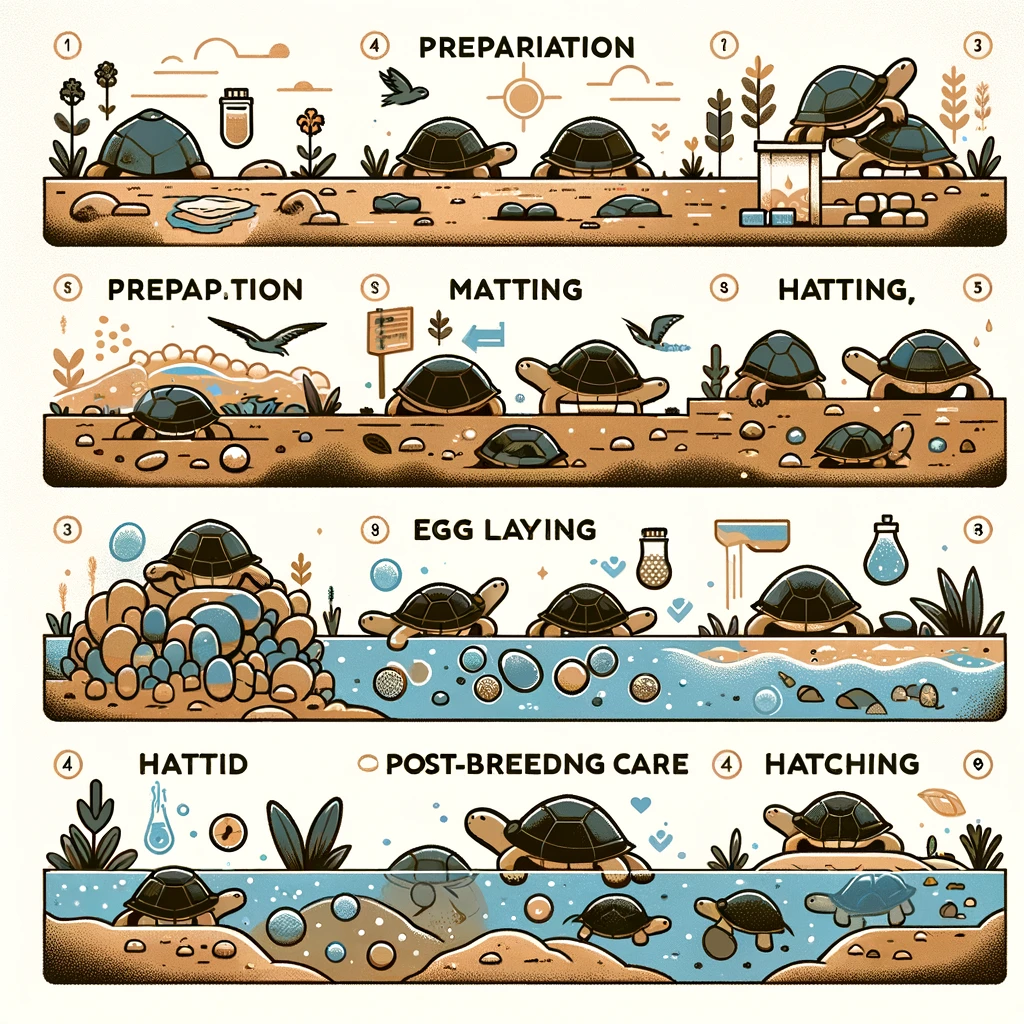
Summary Table
| Stage | Details |
|---|---|
| Preparation | Ensure turtles are mature, healthy, and conditioned for breeding. |
| Mating | Occurs in spring; involves active male courting behaviors. |
| Egg Laying | Provide a moist nesting site; female lays 2-5 eggs. |
| Incubation | Keep eggs at 81°F and 80% humidity for 50-70 days. |
| Hatching | Monitor eggs and provide shallow water and high-quality food for hatchlings. |
| Post-Breeding | Female needs recovery nutrients; |
Breeding mud turtles involves careful preparation, monitoring, and maintenance. By following these detailed steps, enthusiasts can successfully breed their turtles and contribute to the conservation of these wonderful creatures, ensuring their population remains stable and healthy in captivity.
FAQs
When is the right time to breed mud turtles?
Answer: Mud turtles typically breed in the spring. You should prepare by adjusting the light cycle and temperature in late winter to mimic the natural increase in daylight and warmth that stimulates breeding behaviors.
How can I tell if my mud turtles are ready to breed?
Answer:
- Age: Mud turtles are ready to breed once they reach about 5 years of age.
- Behavior: Males will show increased interest in females, often following them or engaging in mating displays like gentle biting or nudging.
What conditions are needed for breeding mud turtles?
Answer:
- Tank Conditions: The tank should have a large enough water area for mating and a comfortable land area for the female to lay eggs.
- Temperature: The water temperature should be between 72-76°F (22-24°C), and the basking area should be around 85-90°F (29-32°C).
- Lighting: Provide 12-14 hours of light per day to simulate the longer days of spring.
How do I set up a nesting area for mud turtles?
Answer:
- Location: The nesting area should be on land, with easy access for the female.
- Substrate: Use moist sand or soil that allows the female to dig easily.
- Privacy: Make sure the nesting area is quiet and secluded to reduce stress on the female.
What should I do after the mud turtle eggs are laid?
Answer:
- Egg Care: Gently move the eggs to an incubator set at 81°F (27°C) with about 80% humidity.
- Marking: Use a non-toxic marker to gently mark the top of the eggs to ensure they are kept in the same orientation.
- Monitoring: Check the eggs regularly for mold, dehydration, or cracks.
How long does it take for mud turtle eggs to hatch?
Answer: Incubation can last between 50 to 70 days, depending on the incubation temperature and the specific species of mud turtle.
How do I care for mud turtle hatchlings?
Answer:
- Initial Care: Let the hatchlings sit in their eggs until they absorb the residual yolk and are more active.
- Feeding: Start feeding them small pieces of food, such as commercially prepared turtle pellets and small insects.
- Habitat: Keep the hatchlings in a shallow water setup with easy access to a basking spot under UVB lighting.
What are the signs of successful fertilization in mud turtle eggs?
Answer: Fertilized eggs will generally be firm and chalky white a few days after being laid. As the embryos develop, you might see slight changes in color and size.
Can mud turtle eggs be incubated artificially?
Answer: Yes, artificially incubating mud turtle eggs is recommended. Use an incubator that maintains a consistent temperature of 81°F (27°C) and high humidity. This method helps protect the eggs from predators and environmental factors.
How can I prevent fungal growth on the eggs?
Answer:
- Hygiene: Keep the incubator clean and free of contaminants.
- Ventilation: Ensure the incubator has good airflow to prevent excessive moisture build-up, which can promote fungus growth.
- Anti-fungal: Some breeders lightly dust the eggs with an anti-fungal powder to inhibit fungal growth.

Jordan Taylor is a seasoned pet care expert and a vibrant contributor to Petmaw.com. With over a decade of experience in veterinary science, Jordan brings a wealth of knowledge and a deep passion for animals to every article. After earning a degree in Veterinary Medicine from the University of Alaska Anchorage, Jordan spent several years working in a busy veterinary clinic, where they honed their skills in pet nutrition, behavior, and wellness.
Jordan’s love for animals isn’t just professional; it’s a fundamental part of their life. Home is shared with three rescue Sloth, two cats, and a small flock of backyard chickens, each with their own rescue story and special place in Jordan’s heart. This personal connection to animals shines through in Jordan’s writing, making their advice not only expert but also empathetic and practical for pet owners.
At Petmaw.com, Jordan is dedicated to providing pet owners with the latest research, trends, and tips in pet care, from innovative feeding strategies to understanding the subtle signs of pet health issues. Whether you’re a seasoned pet owner or new to the pet parenting world, Jordan’s insights aim to enhance the well-being of pets and deepen the human-animal bond.
In their spare time, Jordan is an avid hiker, often found exploring the trails with their dogs. They also volunteer at local animal shelters, offering their expertise and helping animals in need find forever homes. Jordan’s commitment to animal welfare and passion for sharing knowledge makes them a cherished member of the Petmaw.com family and a trusted guide for our readers.
